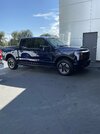I finally have a little time to help clarify why a trailer with battery for electric assist would be good for home backup as well.
I don't need to drag 300 miles of trailer towing batteries around in my truck every day. 200 to 300 miles unloaded would be fine daily.
When I go on road trips towing my trainer, I'll get about half the range from my truck's batteries. If I make that up with 300 miles of batteries in my RV, that will cover road trips very nicely.
The rest of the time, however, those 300 miles of batteries (~100 kWh) will just be sitting around in my driveway getting old (capacity loss due to age), either in my truck or my trailer but doing nobody any good.
Now, if I can use those batteries to go effectively off-grid, countering grid off-peak charges, as well as offering backup power for me and probably my neighbors as well. I can also take these with me to my new house if I move and with the addition of PV on the trailer, it will enable luxury, quiet off-grid boondocking with the trailer as well.
Its a matter of where I put my extra ~100KWh of batteries:
1) In my truck (longer range vehicle to handle towing)?
2) Bolted to my house (Powerwalls)?
3) In my travel trailer (Gets me longer range, grid backup for peak and outages, and enable off-grid in my trailer)?
For the same cost, dominated by the battery cost, 3) may not be a bad choice.
Free Bonus: electric motors on my RV can be used to nudge the RV around sans the tow vehicle.




